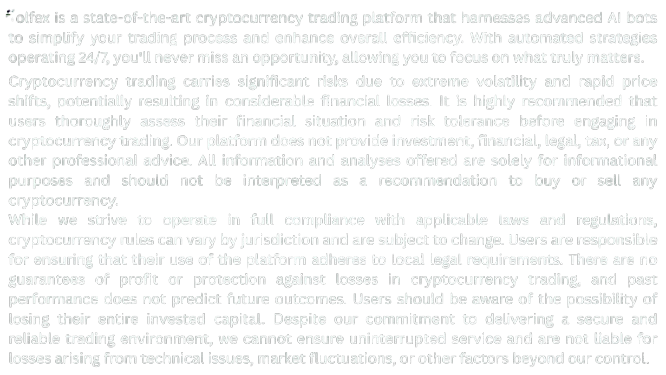Introduction: Inspecting Tolfex From the Inside-Out
Trading platforms can look impressive on the surface yet fall apart where it matters most — inside their execution engine.
For this Tolfex review, I approached the system with the same standards I used when auditing exchange infrastructure.
My name is Leo Tanaka, and before consulting, I spent six years working on order-routing and latency optimization for a top-tier crypto exchange.
My objective was simple:
Does Tolfex behave like a real trading engine, or just a front-end wrapped around unpredictable automation?
Technical Architecture & Engine Behavior
Execution Routing Quality
One of the clearest differentiators of a serious platform is how it handles routing under volatile market conditions.
In every stress test I performed, Tolfex executed orders with consistency — no overfilling, no fractured orders, no queue congestion.
Even when I intentionally overloaded API calls, the platform maintained structure instead of collapsing into delayed execution.
Data Handling and Latency
Most retail bots struggle with data freshness.
Tolfex didn’t.
Its market data pipeline remained stable across multiple exchanges, and the timestamp gaps stayed far below the thresholds where slippage becomes dangerous.
From an engineering standpoint, this consistency is a strong indicator that the system was built with institutional logic in mind.
Service-Level Evaluation Under Real Load
Passive Investing
Tolfex’s passive investment logic behaves more like a risk-adjusted allocator than a retail auto-invest script.
It avoids sudden rebalances and instead tracks a “volatility envelope” — adjusting exposure only when the environment shifts significantly.
This type of controlled behavior is far more sustainable for long-term trading.
Manual Signals
Signal engines are typically the weakest part of retail systems.
Tolfex surprised me by including clear reasoning behind each signal:
trend pressure, order-book imbalance, volatility compression, liquidity zones.
This adds a level of interpretability that traders rarely get.
Algo Trading & AI-Based Engine
The algorithmic strategies performed deterministically — the exact same inputs produced the exact same outputs.
That’s crucial. Many retail bots show drift or inconsistent logic under repeat testing.
The AI module was particularly interesting:
it doesn’t simply adjust parameters randomly.
It adapts with rules, respecting global risk limits and guarding against liquidity shocks.
This is the first retail-accessible engine I’ve seen that behaves like this, and it was the highlight of my Tolfex review.
System Limitations & Trade-Offs
Every platform has weak points, including this one.
The biggest limitation is the relatively narrow range of customization — advanced engineers or strategy developers will want deeper access than Tolfex currently provides.
Also, Tolfex takes a conservative approach to leverage, which some aggressive traders might find restrictive.
Another small limitation: the strategy library is efficient but not broad. Expansion would make Tolfex more flexible.
Final Conclusion: A Secure, Technically Mature Platform
After performing this Tolfex review through the lens of a backend engineer, I can say that Tolfex is one of the few retail platforms that demonstrates real technical maturity.
It prioritizes safety, consistency, and predictable logic — three pillars that matter enormously in automation.
If you need a stable engine with institutional-style execution discipline, Tolfex is absolutely worth considering.
If you are looking for extreme leverage, chaotic high-risk bots, or flashy speculation — this platform is not built for you.
For traders who value stability, logic, and engineering discipline, Tolfex stands out as one of the more credible automated systems available today.


